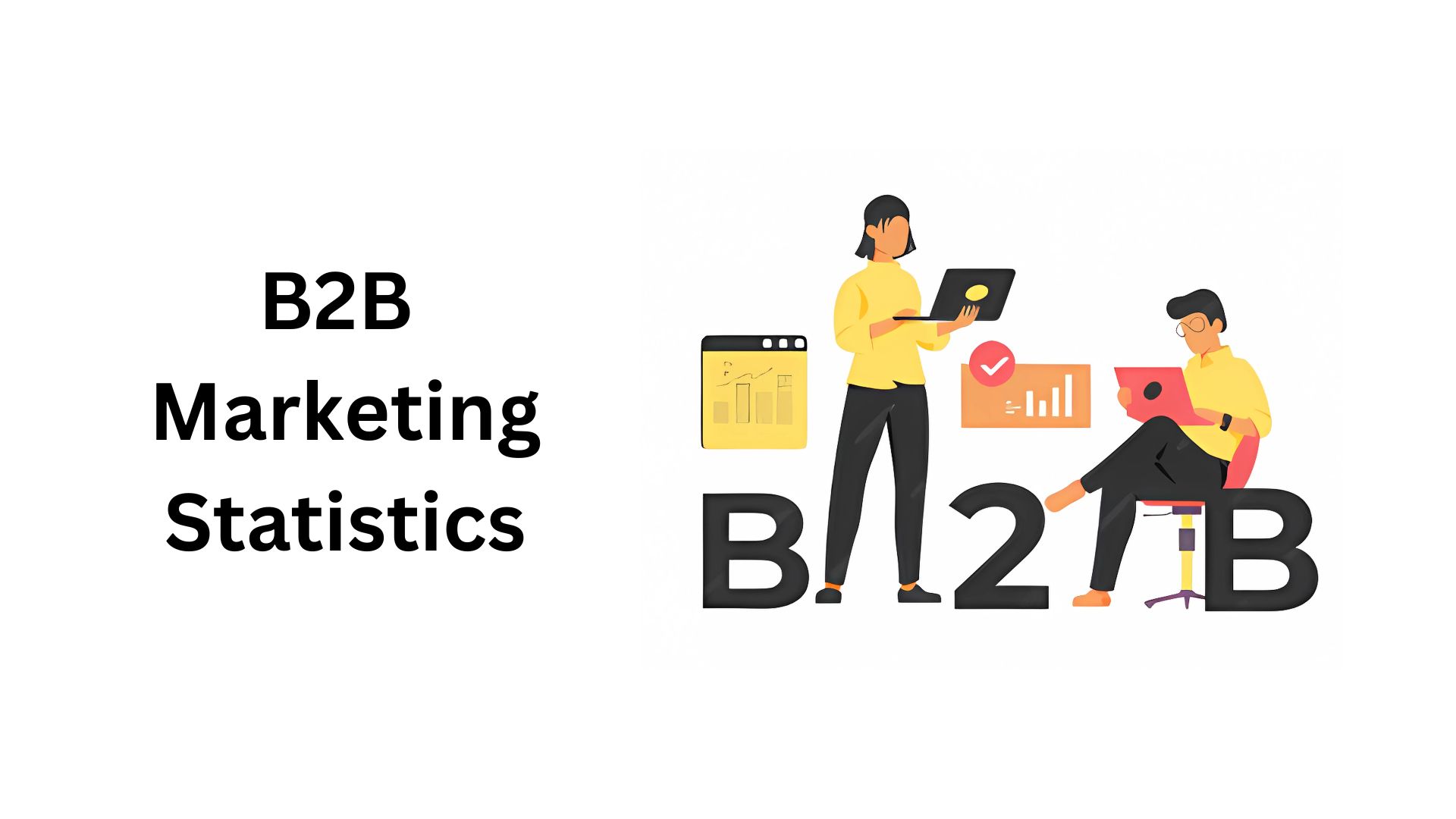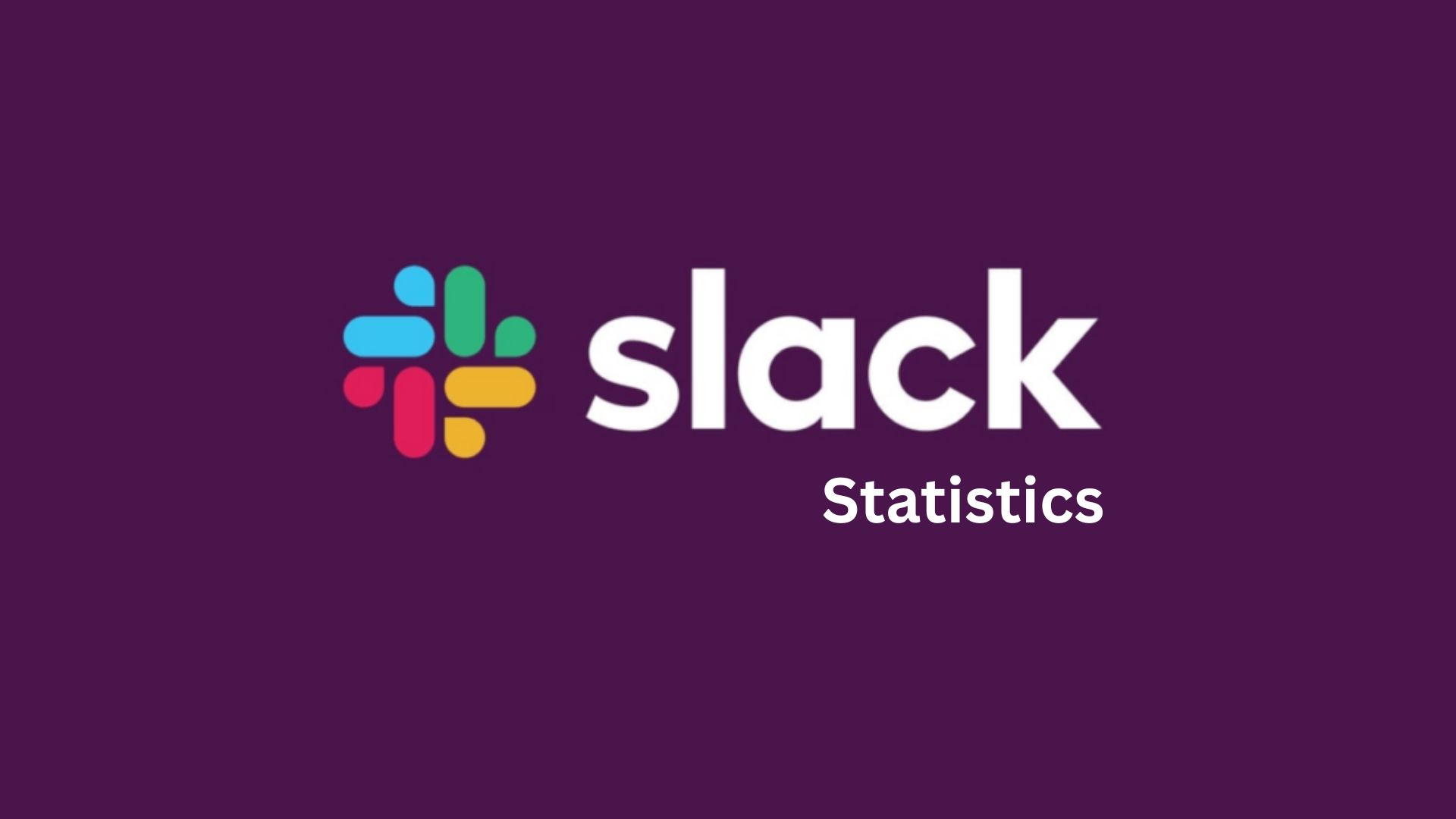Cash App Statistics By Users, Revenue, Demographics And Facts (2025)

Updated · Jul 15, 2025

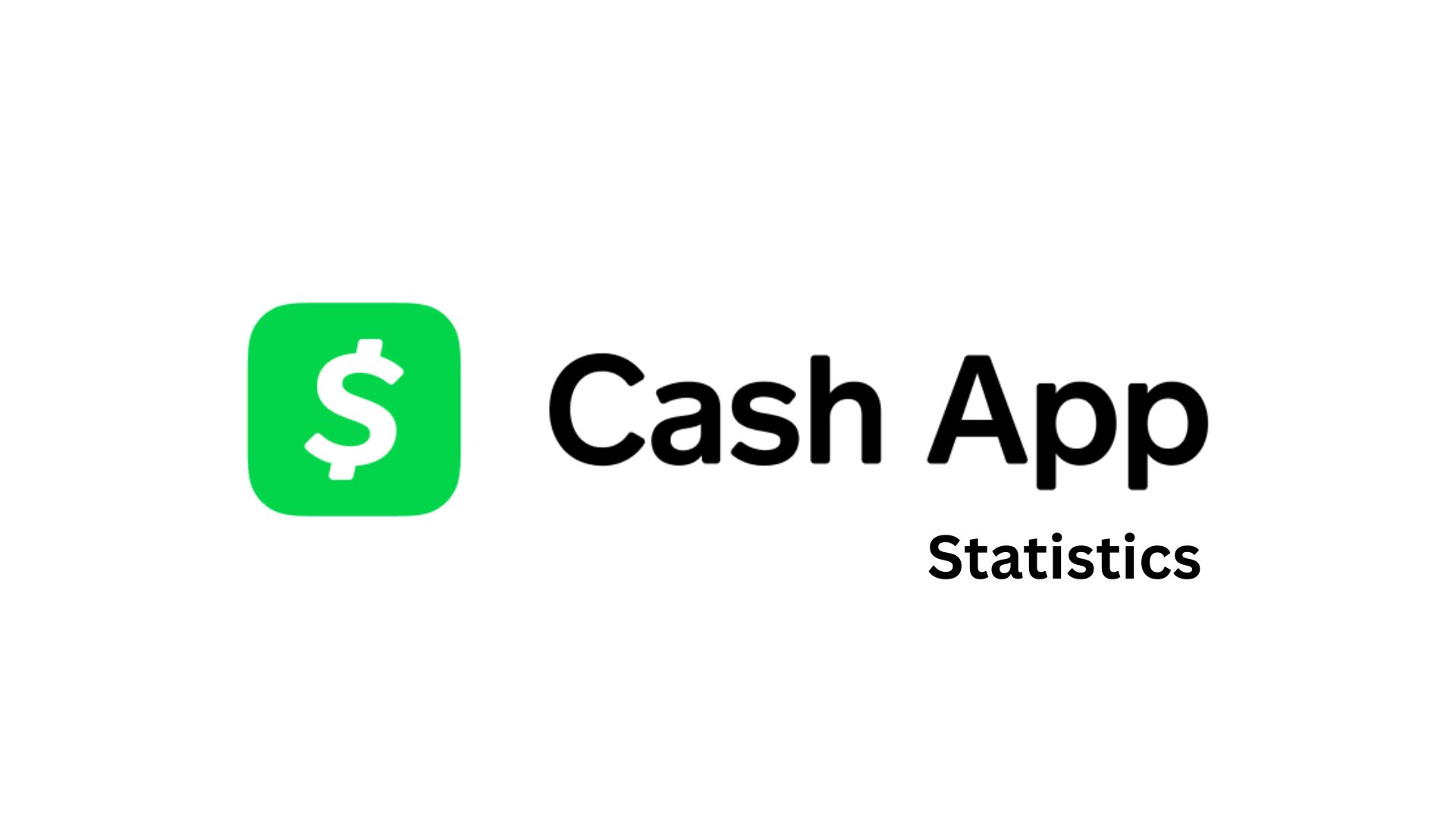
WHAT WE HAVE ON THIS PAGE
Introduction
Cash App Statistics: Since its formation by Block, Inc. (formerly Square), Cash App has become one of the most-used digital wallets and P2P payment platforms in the United States. The app has evolved since its 2013 debut to encompass additional features allowing investing, banking, buying, and selling cryptocurrencies.
In 2024, Cash App kept on its upward trend and thus cemented its position among fintech elites. The following article attempts to lay out some core Cash App statistics and facts representing its performance and growth in 2024.
Editor’s Choice
- By Q1 2025, Cash App continued its massive leg up and by that time recorded approximately 57 million monthly users after emerging quickly and then seeing some signs of user saturation.
- In 2023, Cash App recorded a revenue generation of US$14.68 billion, witnessing a growth of 34.9% over the prior year, with around 76% of this coming from Bitcoin transactions.
- Cash App’s gross profits exploded from US$194.84 million in 2019 to US$5.24 billion in 2025 – that’s more than a 25-fold increase.
- Customer inflows have steadily increased from US$45 billion in Q4 2021 to US$71 billion by Q4 2024, indicating ever-greater user engagement.
- In 2023, the leading industry categories for Cash App Card spending were retail (22%) and restaurants (19%), with travel, gas, and entertainment following.
- Gen Z and Millennials are the key user demographics, with adoption rates of 34% and 25%, respectively.
- Cash Card monthly active users grew from 3.5 million in Q2 2019 until they reached a peak of 25 million in Q1 2025, showing signs of plateauing in 2024.
- Bitcoin revenue increased from US$0.51 billion in 2019 to greater than US$10.1 billion in 2024, highlighting Cash App’s obvious dependence on crypto trends.
- While the population between 25 and 34 years is the largest segment of Cash App users, with 25.89%, it is closely followed by the 35-44 segment at 24.03%.
CashApp Monthly Users
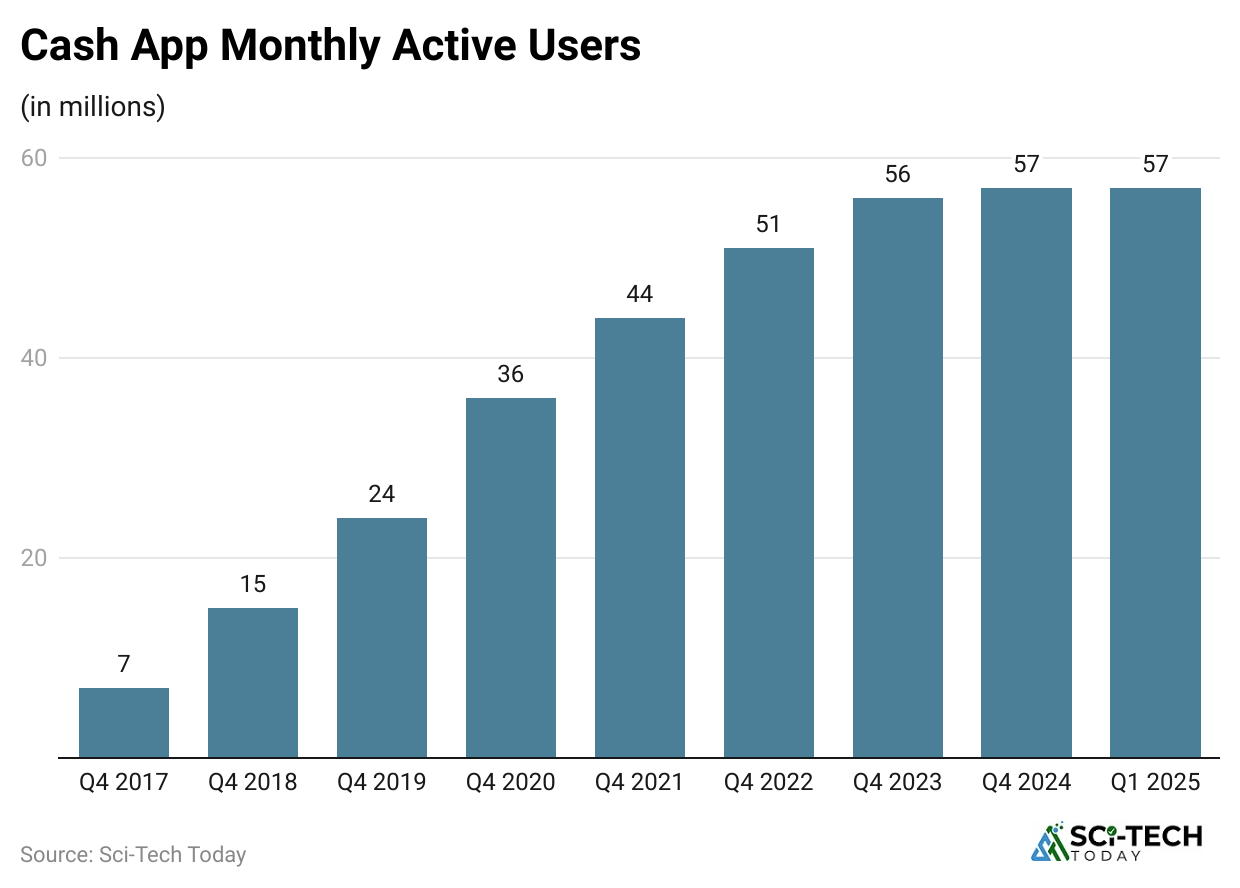
- As per Backlingo, Cash App statistics and facts show that the data for Cash App’s MAUs from Q4 2017 till Q1 2025 shows that the user growth has been ever in ascendance, especially in the earlier times.
- 7 million users were reported in Q4 2017. By Q4 2018, the numbers had more than doubled to reach 15 million, reflecting the increase in mobile payment adoption in the form of solutions.
- Further, strong year-over-year growth continued into Q4 2019, with 24 million users, fueled by Cash App’s expanding features and popularity.
- In Q4 2020, the numbers spiked to 36 million, marking a 50% increase from the previous year, probably due to the impact of more generalised usage of digital payments during the COVID-19 pandemic. This momentum carried on into Q4 2021, culminating at 44 million MAUs, and later at 51 million in Q4 2022.
- Cash App had 56 million monthly active users in the fourth quarter of 2023, but growth slowed from there.
- In 2024 Q4 and 2025 Q1, the user number remained at 57 million, which again seems to imply that either the market is almost saturated for the application or it is moving toward a mature phase, so that fast user growth is now replaced by work toward user engagement and monetisation.
Cash App Revenue
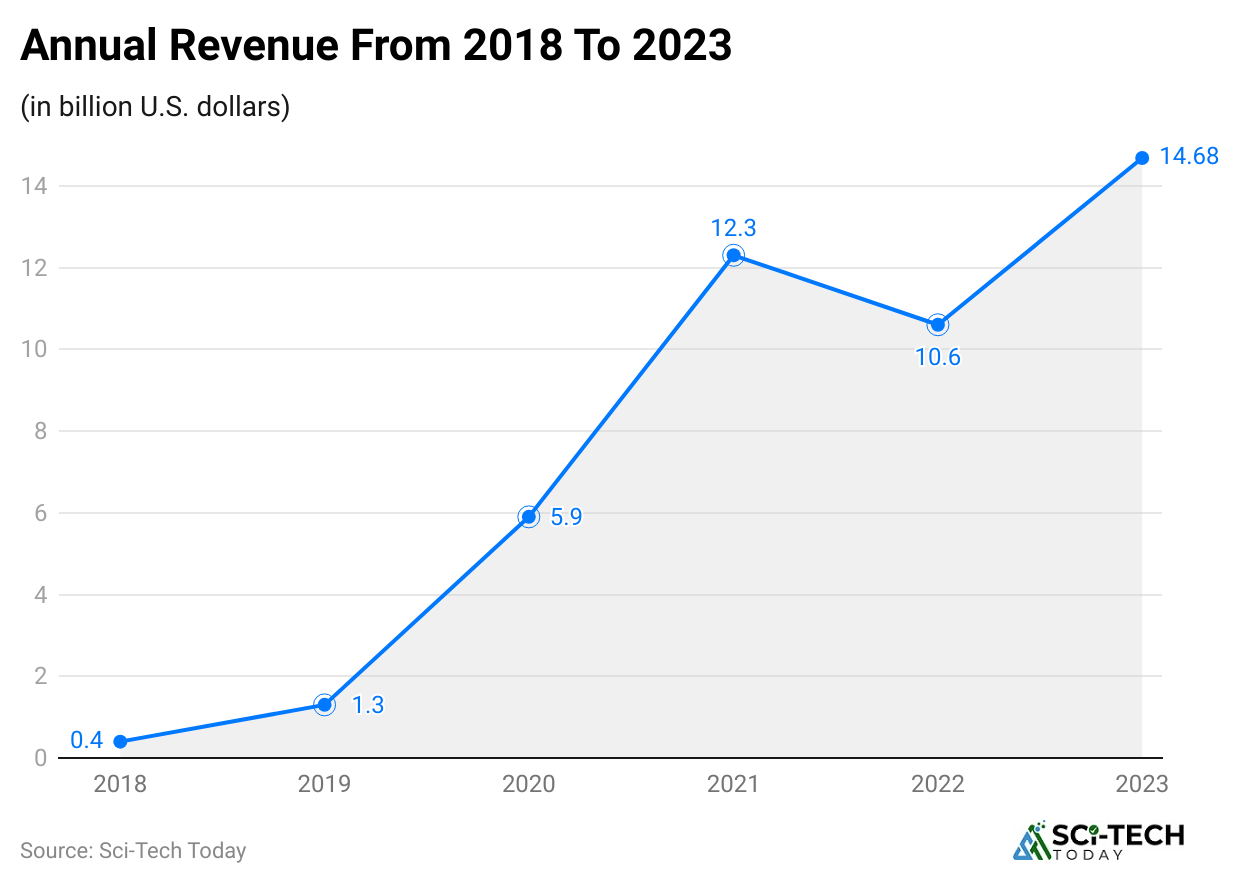
- In 2023, the estimated annual revenue of Cash App was US$14.68 billion. That marked an increase of 34.9%, compared to the previous year’s figures.
- According to Businessdasher reports, Cash App statistics and facts state that a major chunk of this revenue, about 76%, stems from Bitcoin-related transactions. This underlines how important cryptocurrency is in the platform’s revenue model.
- However, while their Bitcoin revenue stays high, Bitcoin gross profit itself was rather low in 2022, at only US$37 million, meaning that regardless of the Bitcoin volumes, these transactions tend to have lower profit margins. This means Cash App is more interested in volume than big profit margins when it comes to its cryptocurrency operations.
Cash App Spending on Top Merchants

- As per the Block report 2023, Cash App statistics and facts Data showed that large stores and discount stores garnered the majority of Cash App cardholder expenditure, comprising 22% of the spending among the top 250 merchants. This encompasses retailer giants such as Walmart and Target, and users possibly buy all sorts of items, from basic household necessities to electronics.
- It appears that many Cash App users rely on their Cash Card for bulk and necessity-oriented buying. Restaurants followed at 19% of total spending, indicating that users usually use the card for dining, take-out, or Food delivery, which points to a user base that prefers spending with convenience.
- Other retail purchases represent 15% of the spending, including clothes, online shopping, specialty items, and personal care products. This indicates some users also use the Cash Card for discretionary purchases.
- Another 13% of the total buying was reserved for travel and entertainment, while gas and auto expenses accounted for another 13%. This implies that Cash Card users are spending not only on daily needs but on activities that centre around mobility and lifestyle experiences, from filling up their cars to booking travels, to going out for events or entertainment.
- Curiously, groceries represented only 8% of these necessities, which is quite low. User preference may just be to spend by other means or benefit-claiming options when it comes to grocery shopping.
- On the other hand, 7% of spending has gone to telecommuting and utilities, suggesting that a fraction of users use the Cash Card to pay recurring bills for mobile services, internet, and electricity. And the last 3% went into the “Other” category that covers miscellaneous and less frequent spending.
- In general, the data shows that although CashApp Card usage is well distributed among spending categories, it does tend to lean toward retail, dining, and lifestyle-oriented types of purchases.
Cash App Gross Profit
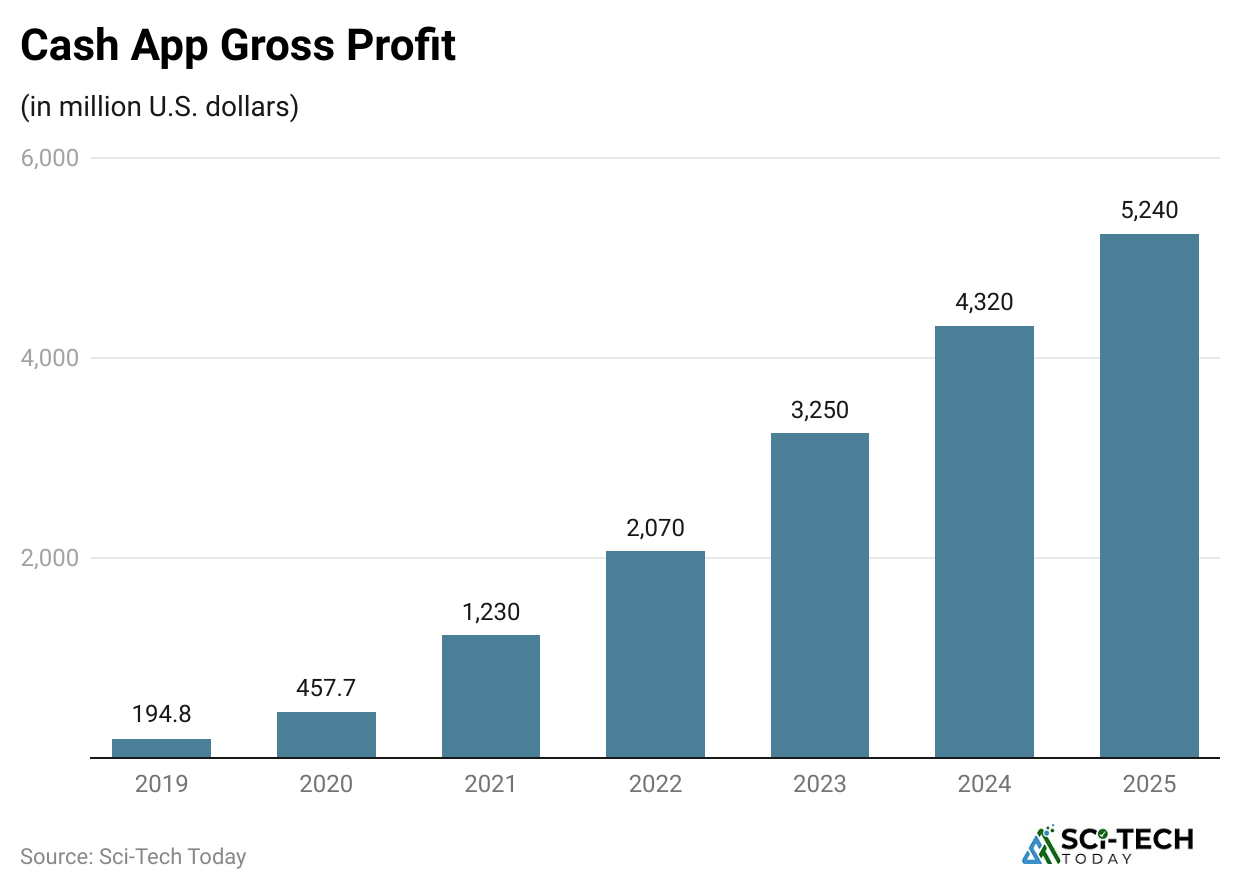
- Cash App’s gross profit has seen incredible growth year over year since 2019. In that year, the platform earned a gross profit of US$194.84 million.
- The gross profit in the following year reached US$457.67 million, accounting for a term of increase of more than 2 times and attributed to the popularity of the app and the increased number of transactions through the platform.
- In 2021, by the time the gross profit had almost tripled to US$1.23 billion, it was clear that the platform could scale up operations and monetise its growing user base.
- During 2022, the gross profit continued its upward trajectory to reach US$2.07 billion. The momentum carried through 2023, with gross profit rising to US$3.25 billion and then US$4.32 billion in 2024.
- In 2025, Cash App’s gross profit touched US$5.24 billion, representing more than a 25-fold increase from the 2019 figure. This sustained growth attests to the fact that over time, Cash App has fine-tuned its financial operations while diversifying its streams of revenue.
Cash App Customer Inflows
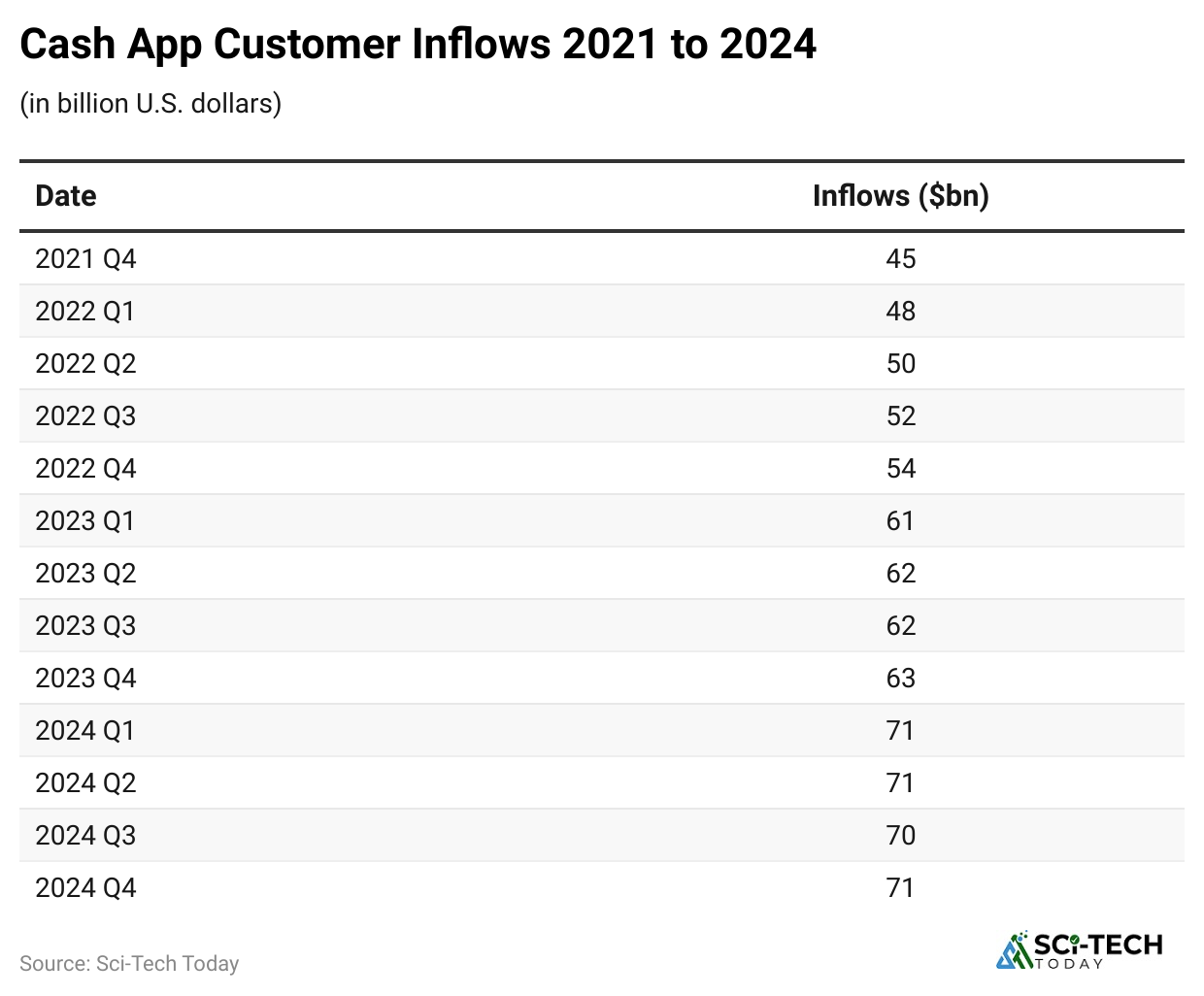
- Customer inflows to Cash App, which take into account the total amounts deposited into the platform by users, gradually increased from late 2021 through 2024.
- Customer inflows decelerated into Q4 2021, at US$45 billion. Subsequently, this figure has shown modest increases through every quarter of 2022, from US$48 billion in the first quarter to US$54 billion by the last quarter, signifying steady engagement of users and increasing levels of trust toward the platform.
- Inflows saw rather strong growth in 2023, starting at US$61 billion in Q1, then US$62 billion in Q2 and Q3, and finally US$63 billion in Q4. This suggests that Cash App was drawing ever-increasing funds, except that it added more financial services and grew its user base.
- The inflows saw further acceleration in 2024, hitting US$71 billion in the first and second quarters. There was a slight dip to US$70 billion in Q3, only to go back up to US$71 billion in Q4.
- Altogether, between Q4 2021 and Q4 2024, customer inflows garnered a 58% increase, testifying to the platform’s stronger position as a financial tool for millions of users.
Cash App Demographics
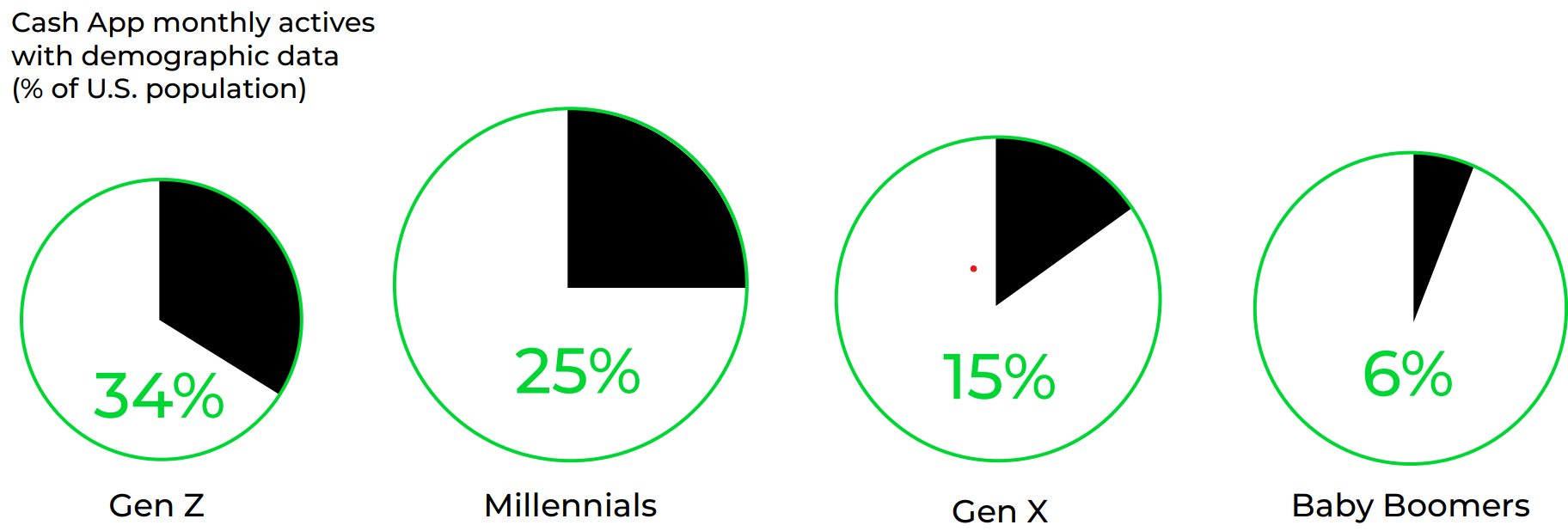
- Cash App is currently touching less than 20% of the U.S. population, and the user base is heavily concentrated among younger generations.
- Gen Z users represent the greatest share of Cash App users, with it reaching 34% of this demographic. Millennials follow closely, with 25% using the application.
- This adoption rate begins to decline with older groups: 15% of Gen X uses Cash App, as do just 6% of Baby Boomers.
- This showcases how this platform is favoured among younger users; older users have had slower uptake of digital finance tools in general.
Cash App Card Monthly Users
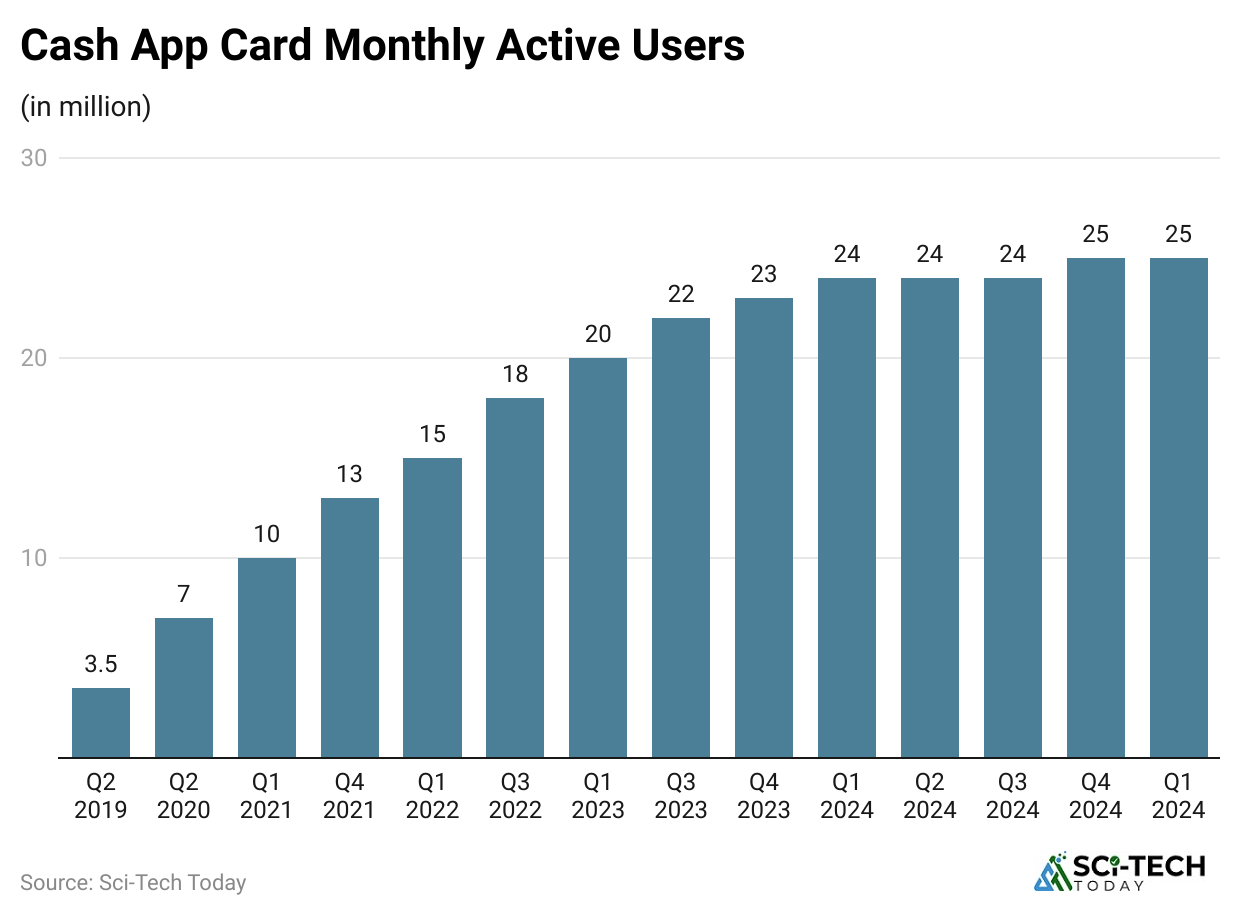
- Cash App Card monthly active users have been growing steadily since Q2 2019. 3.5 million active users had been present formerly; after 1 year, the number doubled and reached 7 million in Q2 2020 and represented increased card adoption as Cash App continued developing its features and building its user base. There was further growth during Q1 2021, with 10 million users and 13 million users by Q4 2021.
- The user base reached 15 million in Q1 2022 and 18 million by Q3 2022. In 2023, the growth seems to have remained steady, with 20 million users by Q1 and 23 million by Q4.
- Moving on to 2024, the user count was 24 million in Q1 and was stable till Q3 before slightly increasing to 25 million in Q4. The latter figure was kept unchanged by Q1 2025.
- Generally, the data portrays a period of rapid early growth, followed by a slow formation of a plateau, meaning this card is one of the highly used features amongst Cash App users, as demonstrated by recent quarter saturation signals.
Cash App Users by Age Group
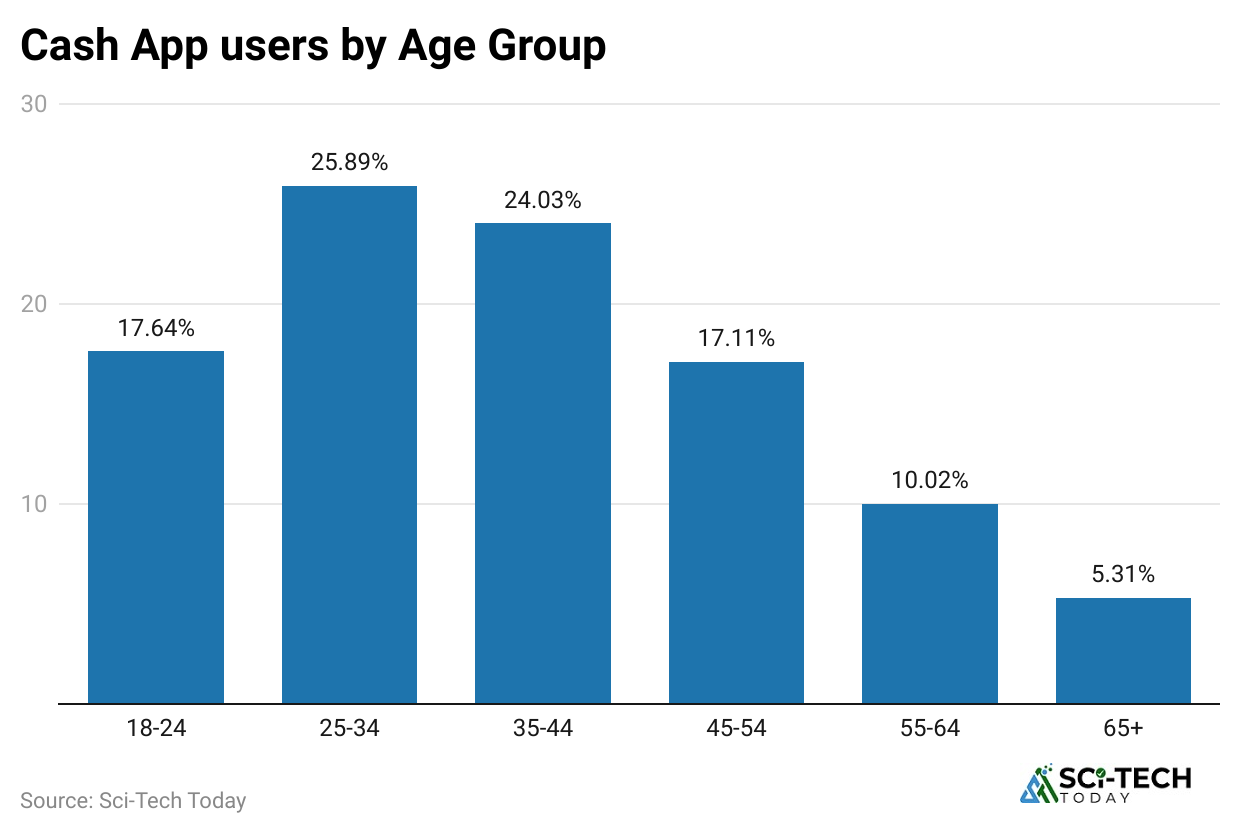
- Especially prominent among Cash App users is the younger set that is tech-savvy, where the biggest bucket of Cash App user population is adults between 25 and 34 years of age, and these make up 25.89% of the user base.
- Close behind in strong engagement among working professionals in their prime earning years are users between the ages of 35 and 44 at 24.03%. The 18-24 age demographic has a durable share of 17.64%, representing clearly solid adoption from Gen Z users who are comfortable with digital tools and mobile banking.
- On the other side, those aged 45-54 make up 17.11% of the base and represent moderate levels of usage from mid-life adults.
- Yet, somewhat ironically, the more senior age brackets see lesser adoption: 10.02% of users belong to the 55-64 age range, and 5.31% are 65 and above. Thus, this picture paints Cash App as being particularly appealing to users in their 20s through early 40s—those who tend to be more digitally fluent and hence more likely to adopt mobile financial services into their day-to-day existence.
Cash App Bitcoin Revenue
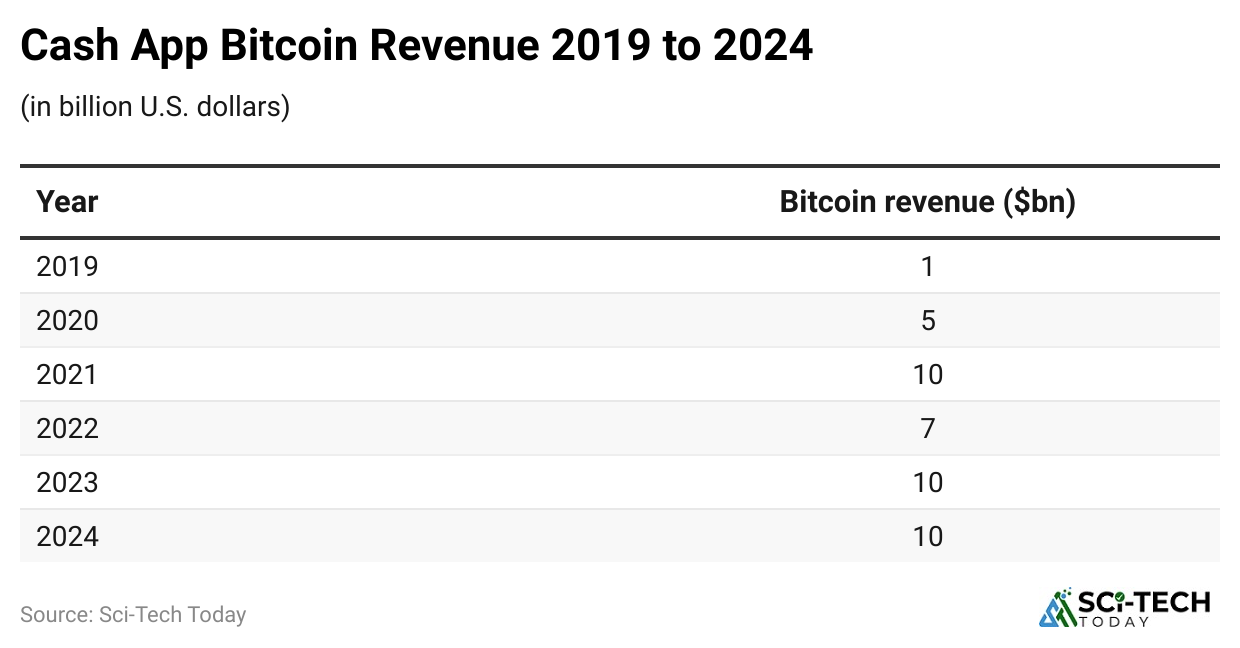
- As per Businessofapps, Cash App statistics and facts indicate that Cash App Bitcoin revenues have, thus, observed dramatic swings between 2019 and 2024, echoing the ups and downs of the prevalent cryptocurrency market.
- In 2019, Bitcoin revenue reached a low of US$0.51 billion, a figure that is quite small compared to the platform’s aggregate earnings.
- Yet, it rose sharply to US$4.57 billion in 2020, given the investor interest surge amid a growing mainstream adoption. This desirous momentum continued into 2021 when Bitcoin revenue realised an all-time peak of US$10.02 billion due to record-high cryptocurrency prices and public enthusiasm.
- In 2022, revenues dropped to about US$7.11 billion, likely due to market volatility and the decline in the Bitcoin price throughout the year. The recovery started in 2023 as the revenue of Bitcoin gradually increased to US$9.5 billion.
- In 2024, Bitcoin revenue hit yet another record, exceeding US$10.1 billion, representing Cash App’s best-ever year for Bitcoin-related revenue.
- Within this context, these figures have demonstrated how substantially Bitcoin still powers the revenue for Cash App and how tied its performance is to the trends in the general crypto market and investors’ behaviour.
Cash App Website Traffic
- Social media traffic towards Cash App is conversing on a few platforms. YouTube stands at the top with a 30.78% share of the social media traffic. Twitter comes in next at 26.33%, followed by Reddit at 13.79%.
- Both Facebook and Instagram hold crucial roles, accounting for about 12.26% and 10.31%, respectively.
- Alongside Cash App, these five social media channels capture the remaining traffic of just 6.54% from all other social spaces.
- The concentration on a few platforms evinces the strong focus of the Cash App social media campaign on these few platforms; depending on networks for new or niche opportunities might be heedless.
- With respect to geographic traffic by device, a huge majority of 88.18% reside in the U.S. Another 1.76% comes from the U.K., while the final 10.06% comes from other nations.
- This distribution helps see how Cash App is still largely regarded as a platform in the U.S., with not much reach overseas in terms of active usage.
Conclusion
Cash App Statistics and Facts: Cash App’s performance in the year 2024 signals a major participant in the digital finance field. With increasing users, higher revenues, and cryptocurrency trade, the platform is very well positioned in the market.
Yet, these are times when regulatory challenges are giving much thought to emphasising the importance of best practices and compliance in the fintech industry. As Cash App evolves through innovations, its capacity to assimilate any regulation and maintain people’s trust will continue to matter immensely for huge and sustainable growth.
FAQ.
It has 57 million monthly active users as of Q1 2025, pointing to a slowdown in growth after many years of forthright growth. The platform’s user base witnessed an exponential rise from 7 million in Q4 2017 to 56 million in Q4 2023; however, recent numbers indicate a levelling-off, implying that Cash App might be convalescing towards maturity, where user acquisition slows down in favour of deepening user engagement and monetisation.
Cash App realised revenues of US$14.68 billion during 2023, where 76% of this was from Bitcoin transactions. Even though these transactions produce massive volumes, they provide little to gross margins because of thin margins. Still, Bitcoin revenue skyrocketed to over US$10.1 billion in 2024, laying emphasis on how dependent the platform is on cryptocurrency trends for its core financial model and how pertinent it is to Cash App.
Cash App cardholders mainly spend money in retail and restaurant establishments, together accounting for 22% and 19% of the transactions registered in 2023. Other popular categories include discretionary retail (15%), travel and entertainment (13%), gas and auto (13%), and groceries (8%). These spending patterns indicate that the Cash Card is equally accepted for everyday purchases as well as for lifestyle shopping, thereby showing that users are comfortable with mobile financial tools.
Cash App’s user base is young and digitally aware. Adults within the 25-34 year age-group comprise the largest cohort at 25.89% with the 35-44 year olds coming next at 24.03%. Those who are 18-24 years of age account for 17.64%, whereas those who are 45-54 years of age constitute 17.11%. From this point, there is a steep drop-off in usage, with just 10.02% of users between 55-64 and 5.31% above 65, found the study, clearly signalling the platform’s favour among the youth generation.
From 2019, when it grossed US$194.84 million, to 2025, Cash App is expected to see an increase of gross profit in excess of 25 times, standing at US$5.24 billion. Meanwhile, customer inflows grew from US$45 billion in Q4 2021 to US$71 billion by Q4 2024, indicating increased trust and increased financial activity on the platform from users. Such sustained inflow growth underscores the fact that Cash App has become a key financial tool for many Americans.

Maitrayee, after completing her graduation in Electrical Engineering, transitioned into the world of writing following a series of technical roles. She specializes in technology and Artificial Intelligence, bringing her experience as an Academic Research Analyst and Freelance Writer, with a focus on education and healthcare under the Australian system. From an early age, writing and painting have been her passions, leading her to pursue a full-time career in writing. In addition to her professional endeavors, Maitrayee also manages a YouTube channel dedicated to cooking.





